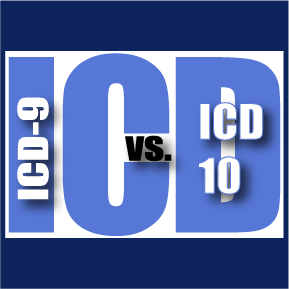Posted By Monique Dever On February 13, 2015
ICD-10-CM has big benefits for Public Health!

ICD-10-CM codes will provide comprehensive data and make it easier to conduct public health surveillance.
That said, the complexity of the codes will most likely require quite a bit of training for the coding staff. Additionally, the transition to ICD-10-CM will require all necessary system upgrades and workflow changes to be in place in order to send and receive the new codes.Understanding the differences and benefits will help you accept and prepare for the inevitable and mandatory change.
ICD-10-CM is not just a revision of ICD-9-CM, but a substantially new complex code system. The 10th edition ICD code sets will dramatically increase the levels of detail of encounters, account for modern technology, procedures and equipment, and ultimately improve exchange of data, an unintended benefit for public health.
First of all, there are more than 68,000 ICD-10 codes and only 14,000 existing ICD-9 codes. This increase is a result of the code build options: longer code structures (expanded from 5 to 7 positions), combination codes (combining diagnosis and symptoms in same code), and using alpha numeric digits in all positions, not just the first.
These new codes allow a lot more information to further describe a patient’s condition, such as whether it is an initial or ongoing encounter, specific anatomical locations, and the state of the patient’s diagnosis. For example, in ICD-10 a pregnant woman will be classified by diagnosis in relation to which trimester of pregnancy she is in rather than the episode of care she received during her visit. Additionally, a patient with advanced diabetes, may have a combined diagnosis of diabetic retinopathy. ICD-10 enables reporting of specifics such as which eye(s) (left, right or both) is affected. With ICD-9 codes it would only reflect that the conditions exist.
Another big reason to move to ICD-10-CM is the advances of technology. ICD-9 codes were initially developed based on the technology of yesteryear and new technologies, equipment and advances in medical practices have rendered ICD-9 impractical to use. ICD-10 code sets not only better describe modern medical practices, it is also scalable with flexibility to adapt as medicine continues to advance, because of the additional positions in the code structure.
So while the new codes will be much more informative and get us caught up with today’s medical practices, the use of the ICD-10 codes will also bring much more comprehensive and thorough data. The improved data is a welcome, albeit unintended, benefit for public health departments. Structured detailed data can be more easily measured, reported and exchanged. It makes it easier to conduct public health surveillance. It will allow more insight to details that could prove valuable to improved patient healthcare, patient outcomes, and the health of the population as a whole.
The changeover to ICD-10 code use will happen on October 1, 2015. If you want to learn more of the nitty-gritty differences between ICD-9-CM and ICD-10-CM the Centers for Medicare and Medicaid Services (CMS) has quick references of similarities and differences between ICD-9-CM and ICD-10-CM outlined in The Next Generation of Coding and ICD-10-CM Classification Enhancements.